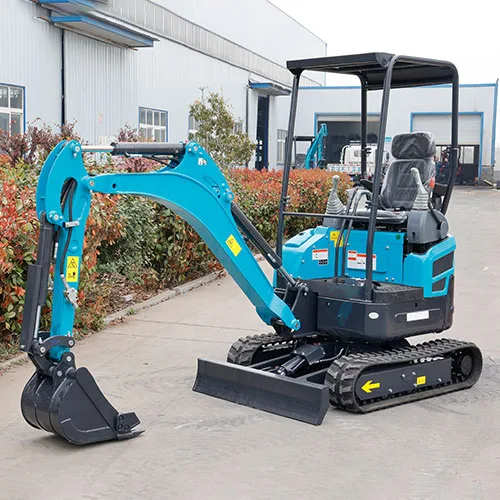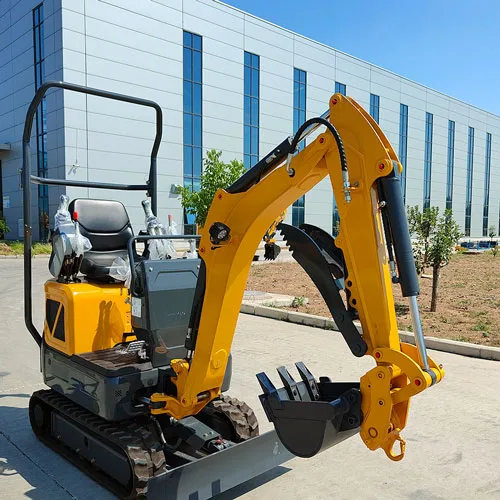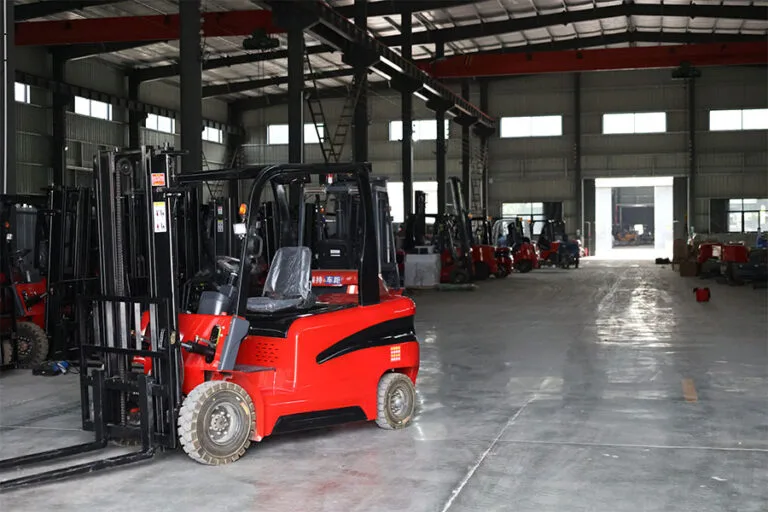I’m thrilled to have you here! Before we dive into the content, let’s stay connected. Join me on my social media platforms for more insights, community engagement, and regular updates. Here’s where you can find me:
📌 Facebook: Shandong Huaying International Trade Co., Ltd.
Now, let’s embark on this journey together. I hope you find the content here not only insightful and engaging but also valuable to your interests. Let’s learn, grow, and connect!
Table of Contents
Introduction

Backhoe excavators are among the most versatile and powerful pieces of construction equipment. Used widely in agriculture, construction, and landscaping, these machines combine digging, lifting, and loading functions in one unit. Whether you are purchasing your first backhoe excavator or upgrading your existing equipment, knowing what to look for can save you time, money, and frustration.
This guide will walk you through the top 8 essential tips for buying backhoe excavators, helping you make an informed choice tailored to your project needs. From understanding key features to assessing cost and maintenance, this comprehensive blog covers it all.
Tip 1: Know the Types and Sizes of Backhoe Excavators
Backhoe excavators come in a broad range of sizes and types to meet the demands of various job sites and projects. Selecting the right size and type of backhoe excavator is essential to maximize productivity, minimize operational costs, and ensure safety.
- Mini backhoe excavators are compact machines typically weighing between 3 to 5 tons and equipped with engine power ranging from 40 to 60 horsepower. Their smaller footprint makes them perfect for residential landscaping, utility work in tight urban environments, and small-scale agricultural tasks. Their compact design allows easy transportation and maneuvering through narrow spaces without sacrificing basic digging and loading capabilities.
- Medium-sized backhoes represent the most common category for general construction purposes. These machines usually weigh between 5 to 10 tons and feature engine power from 60 to 90 horsepower. Their enhanced digging depth—usually between 12 to 16 feet—and stronger hydraulic systems allow them to handle a variety of applications, such as trench digging for utility lines, foundation work, and road maintenance.
- Large backhoe excavators are designed for heavy-duty applications. These robust machines often weigh over 10 tons and boast engines exceeding 90 horsepower. They are suitable for tasks such as large-scale excavation, mining, demolition, and deep trenching. The durability and power of large backhoes enable operators to use heavy attachments and work continuously in harsh environments.
Understanding these categories and aligning them with your project needs helps avoid underpowered or oversized machinery, both of which can lead to inefficiencies or excessive wear and tear.
Tip 2: Evaluate Engine Power and Performance
Engine power is one of the most critical considerations when purchasing a backhoe excavator. It directly influences the machine’s digging speed, lifting capacity, and ability to operate various attachments efficiently.
Compact or mini backhoe excavators typically come equipped with engines in the 40 to 60 horsepower range. These engines provide sufficient power for light digging, landscaping, and utility work. They are often more fuel-efficient and easier to maintain, making them a cost-effective choice for smaller projects.
Medium and large backhoe excavators feature more powerful engines, ranging from 60 to over 100 horsepower. This increased power translates to faster digging cycles, higher breakout forces, and greater lifting capabilities, essential for heavy-duty construction, roadwork, and industrial applications.
However, it’s important to balance power with fuel efficiency. Larger engines consume more fuel, which increases operating costs and environmental impact. Modern backhoe excavators often incorporate fuel-saving technologies such as electronic engine management systems and idle-reduction features to optimize performance without sacrificing power.
In addition to horsepower, consider other engine performance metrics like torque, fuel injection technology, and emission standards compliance (e.g., Tier 4 or Stage V), which can impact the machine’s overall efficiency and sustainability.
Tip 3: Understand Hydraulic Systems and Their Impact on Backhoe Excavators’ Efficiency

The hydraulic system is the heart of any backhoe excavator, powering the boom, arm, bucket, and attachments. The quality, capacity, and design of this system significantly affect the machine’s responsiveness, precision, and operational smoothness.
Look for backhoe excavators with advanced hydraulic controls, including load-sensing systems that automatically adjust flow and pressure based on task requirements. This technology not only improves fuel efficiency but also enhances control accuracy, reducing operator fatigue and increasing productivity.
Some machines offer auxiliary hydraulic circuits that enable the use of specialized attachments such as hydraulic breakers, augers, grapples, and compactors. Having multiple auxiliary lines with adjustable flow rates allows operators to switch between different attachments seamlessly, expanding the machine’s versatility.
Pay attention to hydraulic pump types, reservoir capacity, and filtration systems, as these components contribute to system reliability and longevity. Efficient hydraulic systems reduce maintenance needs and downtime, saving costs over the machine’s life.
Tip 4: Assess Comfort and Safety Features in Backhoe Excavators
Operator comfort and safety are often underestimated but critical factors in backhoe excavator selection. Comfortable operators are more productive, make fewer mistakes, and experience less fatigue during long workdays.
Modern backhoe excavators come equipped with ergonomically designed seats that offer adjustable cushioning and suspension to absorb shocks and vibrations. Many models include climate-controlled cabins with heating and air conditioning to protect operators from extreme temperatures and harsh weather.
Control panels should be intuitive and user-friendly, allowing easy access to functions and clear visibility of important machine parameters. Features such as touchscreen displays, programmable settings, and joystick controls enhance the operator experience and precision.
From a safety standpoint, machines must have rollover protection systems (ROPS) and falling object protective structures (FOPS) to safeguard operators in case of accidents. Enhanced visibility through large windows, cameras, and mirrors reduces blind spots, lowering the risk of collisions on busy job sites.
Other safety innovations include automatic parking brakes, emergency stop buttons, and audible alarms for reversing or hydraulic pressure alerts. When selecting a backhoe excavator, prioritize models that meet or exceed industry safety standards to protect both operators and surrounding personnel.
Table: Comparison of Key Features in Different Backhoe Excavator Models
| Feature | Mini Backhoe Excavators | Medium Backhoe Excavators | Large Backhoe Excavators |
|---|---|---|---|
| Engine Power (HP) | 40-60 | 60-90 | 90+ |
| Digging Depth (ft) | 8-12 | 12-16 | 16+ |
| Operating Weight (tons) | 3-5 | 5-10 | 10+ |
| Hydraulic Flow (GPM) | 10-15 | 15-25 | 25+ |
| Typical Applications | Landscaping, light jobs | Construction, utility work | Heavy construction, mining |
| Cabin Comfort | Basic | Moderate | Advanced |
| Safety Features | Basic ROPS | ROPS + visibility aids | Full ROPS + advanced safety |
Tip 5: Consider Maintenance and After-Sales Support

Regular maintenance is essential to ensure that backhoe excavators perform optimally and enjoy a long service life. These machines operate in demanding environments, facing constant mechanical stress, dirt, and harsh weather conditions. Without proper care, components such as hydraulic pumps, hoses, seals, and engine parts can wear out quickly, leading to costly repairs or downtime.
Before purchasing a backhoe excavator, investigate the availability and proximity of authorized service centers and skilled technicians who specialize in your chosen brand or model. Reliable after-sales support means faster repairs and less downtime, which translates directly to project efficiency.
Also, inquire about the availability of spare parts. Some manufacturers have robust global supply chains, while others may have delays or limited stock, especially in remote regions. Availability of parts affects repair time and costs.
Consider service packages or extended warranties offered by dealers. These programs often include scheduled maintenance, emergency repairs, and even operator training. Choosing a manufacturer or dealer with a strong support network can save you considerable time and money, reducing the total cost of ownership over the life of the machine.
Tip 6: Evaluate Fuel Efficiency and Environmental Impact
Fuel efficiency is becoming increasingly important for construction equipment buyers, driven by rising fuel prices and stricter environmental regulations worldwide. Backhoe excavators, especially those with larger engines, can consume significant amounts of diesel fuel, impacting operational budgets and carbon footprints.
Modern backhoe excavators often come equipped with engines compliant with the latest emission standards, such as Tier 4 in North America or Stage V in Europe, which drastically reduce pollutants like nitrogen oxides (NOx) and particulate matter (PM). These engines use technologies such as selective catalytic reduction (SCR), diesel particulate filters (DPF), and electronic fuel injection to optimize combustion and minimize emissions.
Evaluating fuel efficiency not only helps reduce operating costs but also supports corporate sustainability goals. Efficient machines contribute to cleaner job sites, reduce environmental penalties, and enhance public perception of your business.
When comparing models, look beyond engine specs and consider features like auto-idle shutdown, engine load-sensing systems, and hybrid or electric powertrains, which are emerging innovations improving fuel economy and reducing environmental impact.
Tip 7: Budget Wisely: Understand Total Cost of Ownership
While the initial purchase price of backhoe excavators is often the first focus, savvy buyers recognize that total cost of ownership (TCO) extends well beyond the sticker price. TCO encompasses several factors including fuel consumption, routine and unexpected maintenance, repairs, operator training, insurance, and eventual resale value.
Low-cost machines may seem attractive upfront but can lead to higher operating costs due to frequent breakdowns, inefficient fuel consumption, and lack of durable components. On the other hand, investing in a higher-quality machine with proven reliability often results in better productivity, fewer repair bills, and higher resale value.
Operator training is another frequently overlooked expense. Properly trained operators can use backhoe excavators more efficiently, avoid unnecessary wear, and reduce the risk of accidents or damage, positively impacting overall ownership costs.
To budget wisely, request detailed cost breakdowns from dealers and consider consulting industry reports or case studies comparing different models’ TCO over their lifecycle.
Tip 8: Test Drive and Inspect Before Buying Backhoe Excavators

There is no substitute for firsthand experience when purchasing a backhoe excavator. Scheduling a test drive allows you to evaluate the machine’s performance, handling, and operator comfort under real or simulated working conditions.
During the test drive, pay close attention to how smoothly the controls respond, the speed and power of digging and lifting operations, and the stability of the machine during movement and operation. Check for unusual noises, vibrations, or delays in hydraulic responses.
A thorough inspection of critical components is equally important. Examine the boom, dipper arm, and bucket for any signs of cracks, rust, or excessive wear. Inspect hydraulic hoses and fittings for leaks, abrasions, or brittleness. Tires or tracks should be checked for wear patterns and tread depth.
Engaging with experienced operators or technicians to accompany you during the inspection can provide valuable insights, as they can spot potential issues that might not be obvious to less-experienced buyers.
If purchasing used equipment, request maintenance records and, if possible, a professional mechanical evaluation to avoid costly surprises after the purchase.
Conclusion
Buying a backhoe excavator is a significant investment. By following these top 8 tips—understanding types and sizes, evaluating power and hydraulics, prioritizing safety and comfort, considering maintenance and fuel efficiency, budgeting wisely, and performing a thorough inspection—you can select a machine that delivers maximum productivity and reliability.
Equip yourself with knowledge and take advantage of expert advice to get the most value from your backhoe excavator purchase.
FAQ
Q1: What size backhoe excavator should I buy for small-scale projects?
For small or residential projects, a mini backhoe excavator with engine power around 40-60 HP and a digging depth of 8-12 feet is usually sufficient.
Q2: How important is hydraulic flow rate in backhoe excavators?
Hydraulic flow rate determines the speed and force of attachments. Higher flow rates enable better performance of tools like breakers and augers.
Q3: Are backhoe excavators fuel-efficient?
Modern backhoe excavators come with advanced engines designed for fuel efficiency and reduced emissions, but fuel consumption varies by size and workload.
Q4: What maintenance is typically required for backhoe excavators?
Routine maintenance includes checking hydraulic fluids, engine oil, filters, and inspecting hoses and structural components for wear.
Q5: Can I use backhoe excavators in tight spaces?
Yes, mini backhoe excavators are specifically designed for tight spaces and urban environments, offering maneuverability without sacrificing power.



